Team:UCL/faq
From 2014.igem.org
(Difference between revisions)
Adamdenyer (Talk | contribs) (Created page with "{{:Team:UCL/Template:htmlheader}} <html> <body class="index"> </html> {{:Team:UCL/Template:pageheader}} <html> <!-- begin #page - the container for everything but header --> ...") |
|||
| (2 intermediate revisions not shown) | |||
| Line 13: | Line 13: | ||
<!-- CONTENT GOES HERE --> | <!-- CONTENT GOES HERE --> | ||
| + | <div class="hero-unit"> | ||
| + | <div class="container"> | ||
| + | <h2>Frequently Asked Questions</h2> | ||
| + | </div> | ||
| + | <!--close container--> | ||
| + | </div> | ||
| + | <!--close hero-unit--> | ||
| + | <div class="container clearfix" id="main-content"> | ||
| + | <!--begin main content--> | ||
| + | |||
| + | <div class="row-fluid sidebar-right"> | ||
| + | <!--begin row-fluid--> | ||
| + | <div class="span9 primary-column"> | ||
| + | <p>Our project is complex and many questions are often asked, hence we are adding more responses to our FAQ everyday. If you have any further questions, or you would just like to get in touch, feel free to email us at ucligem2014@gmail.com and we will be in quick contact with you!</p> | ||
| + | <ul class="s-accordion faq fancy"> | ||
| + | <li class="s-wrap"> | ||
| + | <h4 class="trigger"><a href="#">What is Synthetic Biology? <i class="icon-plus-sign"></i></a></h4> | ||
| + | <div class="s-content"> | ||
| + | <p>Synthetic Biology aims to design, build, and test novel biological systems. It consists of conscious and deliberate modification(s) of living organisms by acting on their genetic code. While genetic engineering, in general, is the insertion of foreign genes from one organism to another, synthetic biology wants to go one step further by treating DNA as a true code that can be modified, written and rewritten, in order to obtain new and more complex functions. Once the sequence is designed, this DNA is synthesised and inserted into a living organism, reprogramming its function at our will, and allowing us to modify the ultimate part of nature: life itself. We are therefore able to move the genetic information from the physical world to the digital world, where we can alter it intentionally, before bringing it back to the physical world to modify its features and behaviour.</p> | ||
| + | </div> | ||
| + | <!--close s-content--> | ||
| + | </li> | ||
| + | <!--close s-wrap--> | ||
| + | |||
| + | <li class="s-wrap"> | ||
| + | <h4 class="trigger"><a href="#">What is iGEM? <i class="icon-plus-sign"></i></a></h4> | ||
| + | <div class="s-content"> | ||
| + | <p>The International Genetically Engineered Machine (iGEM) is a synthetic biology competition where teams from around the world aim to design and build a biological system out of standardised, interchangeable parts.</p> | ||
| + | <p>The iGEM foundation aids this by creating the Registry of Standard Biological Parts, a library of characterised genetic sequences which perform desired functions. These standardised components (BioBricks) are formatted in a way which enables them to be easily put together so users can mix and match genes to create an organism displaying a unique set of functions. Teams re-use existing BioBricks, as well as designing new ones, in order to create genetically engineered machines.</p> | ||
| + | |||
| + | <p>These engineered systems can potentially be used for a range of applications: from medical uses such as the tailored release of insulin for the treatment of diabetes to resolving global environmental issues by mass production of biofuels from renewable sources. This year, the UCL iGEM team attempts to tackle an environmental problem, the pollution of waterways by industrial azo-dye disposal. This addresses the pressing need to clean up industrial effluents of these carcinogenic derivatives before being released into the environment, and thus keeping our water systems clean.</p> | ||
| + | |||
| + | <p>The iGEM competition aids the advancement of the new field of synthetic biology by building a community of students, research institutes and industries able to effectively apply biological technology to tackle global problems.</p> | ||
| + | </div> | ||
| + | <!--close s-content--> | ||
| + | </li> | ||
| + | <!--close s-wrap--> | ||
| + | |||
| + | |||
| + | </ul> | ||
| + | <!--close s-accordion.faq --> | ||
| + | |||
| + | </div> | ||
| + | |||
| + | </div> | ||
| + | <!--close row-fluid--> | ||
| + | </div> | ||
| + | <!--close .container id="main-content" --> | ||
</html> | </html> | ||
{{:Team:UCL/Template:pagefooter}} | {{:Team:UCL/Template:pagefooter}} | ||
Latest revision as of 23:21, 22 July 2014
 "
"
